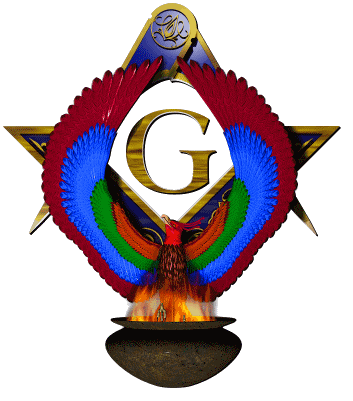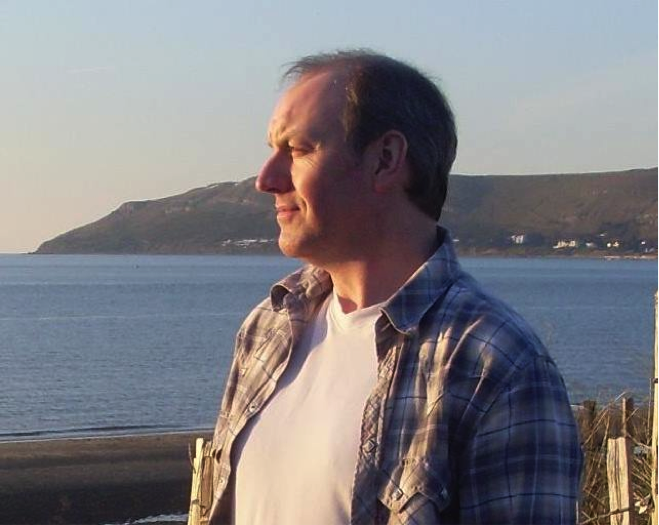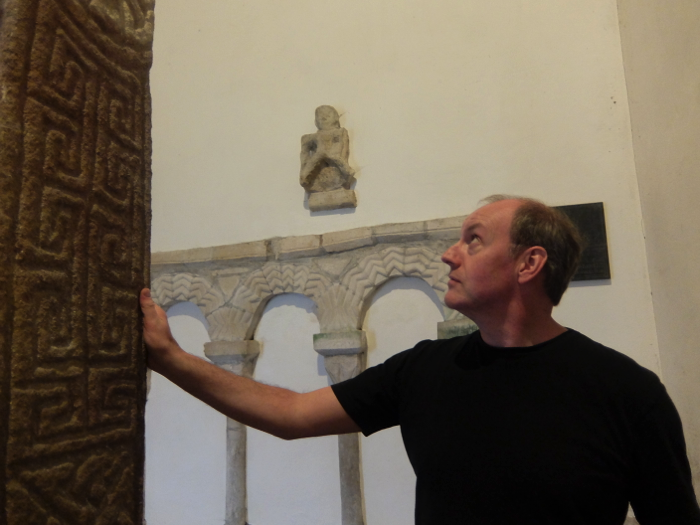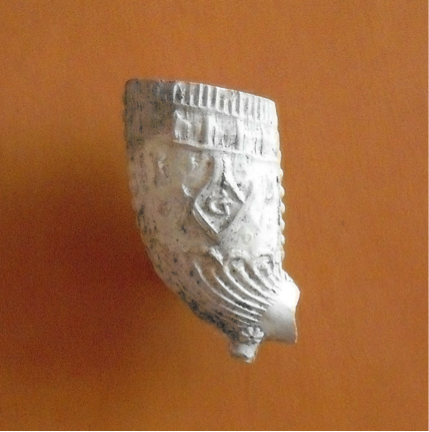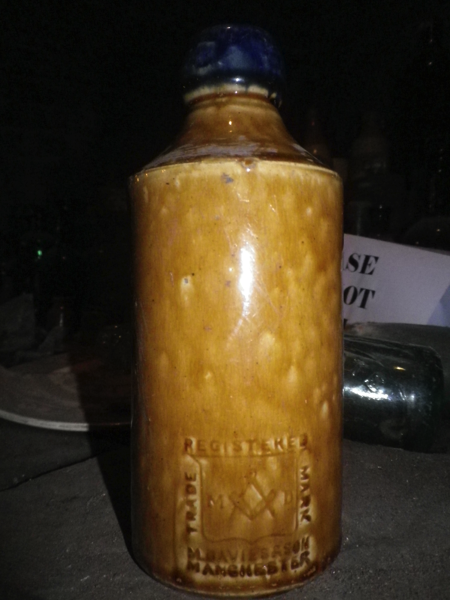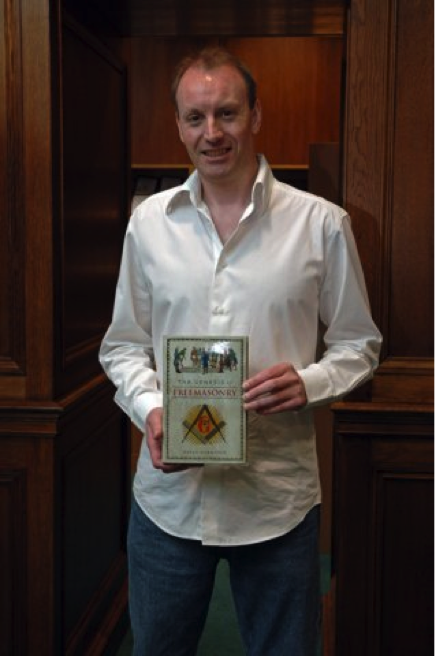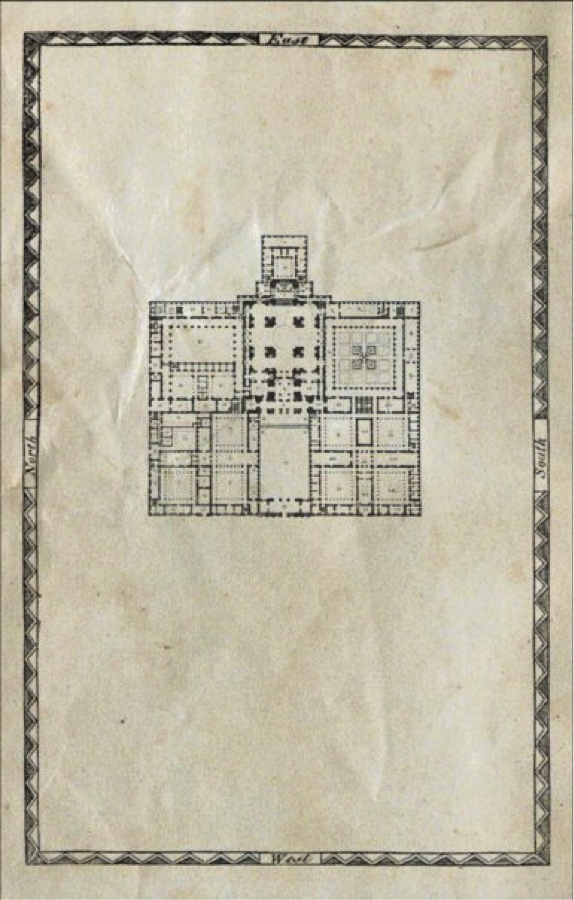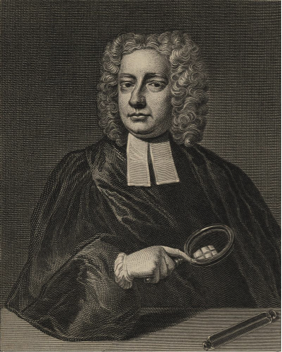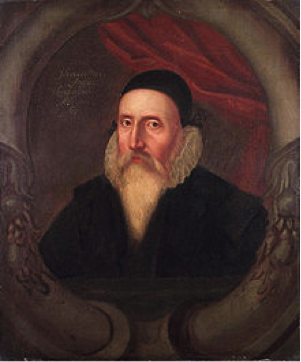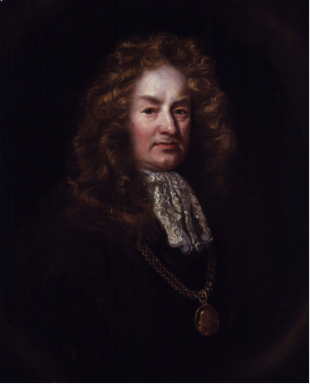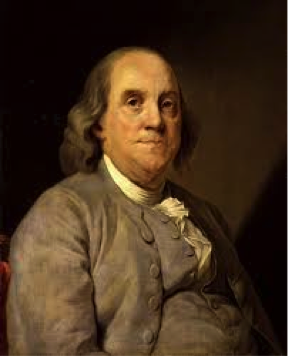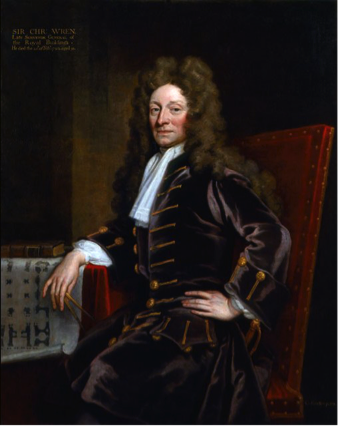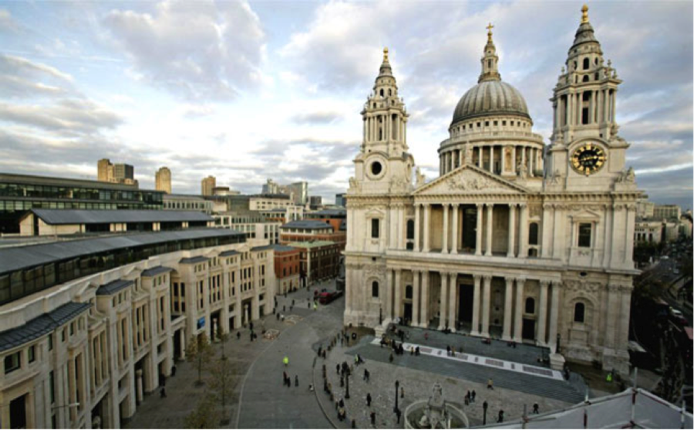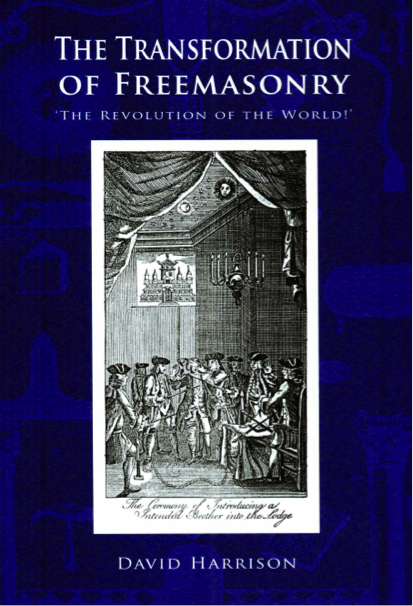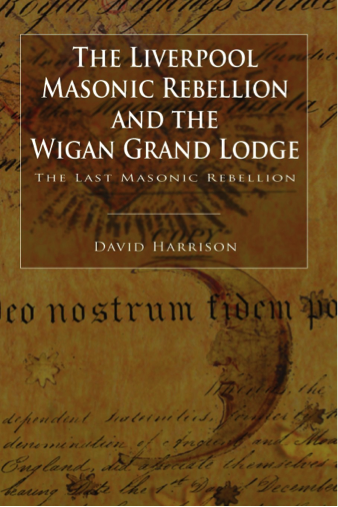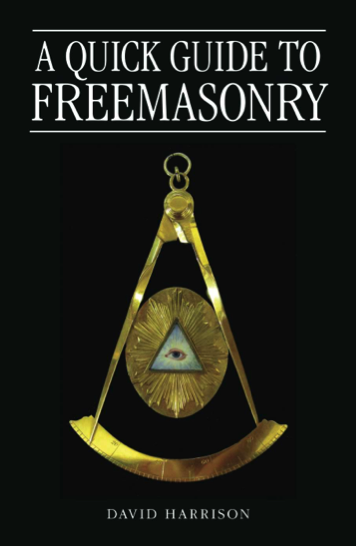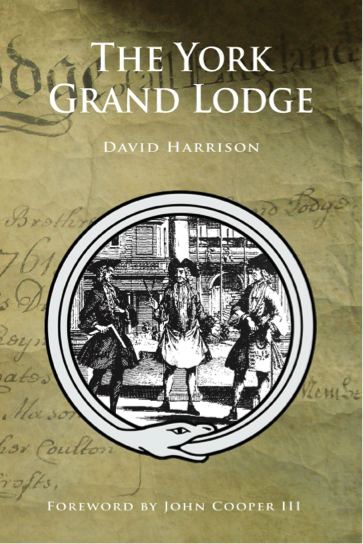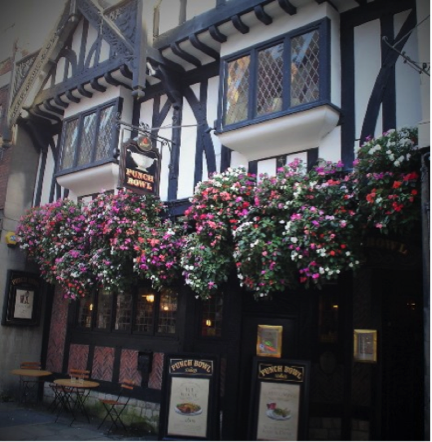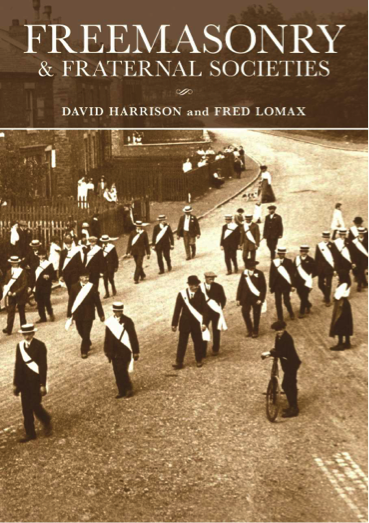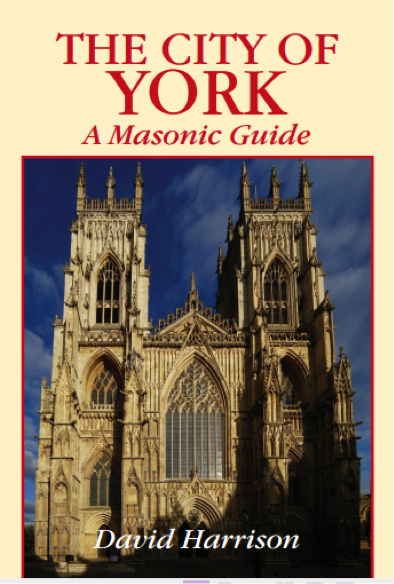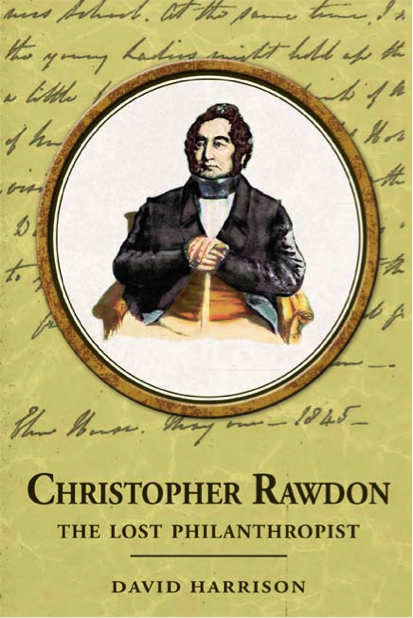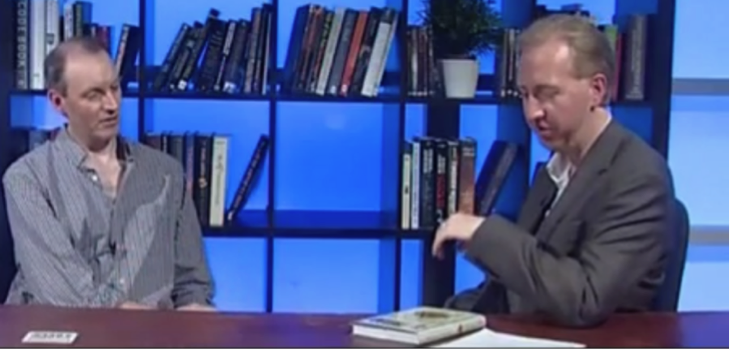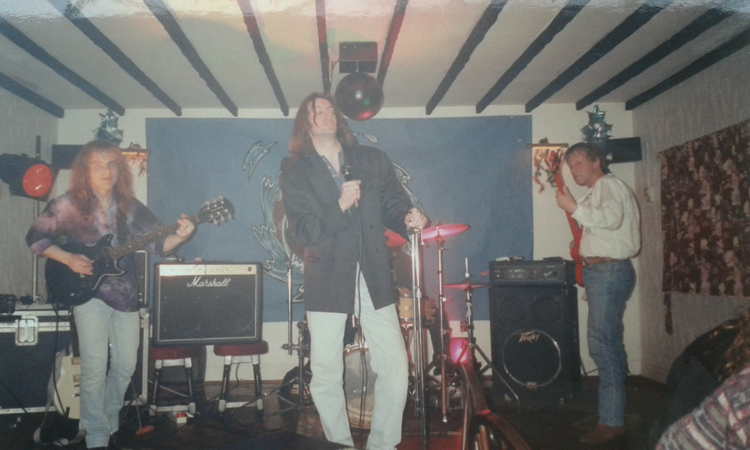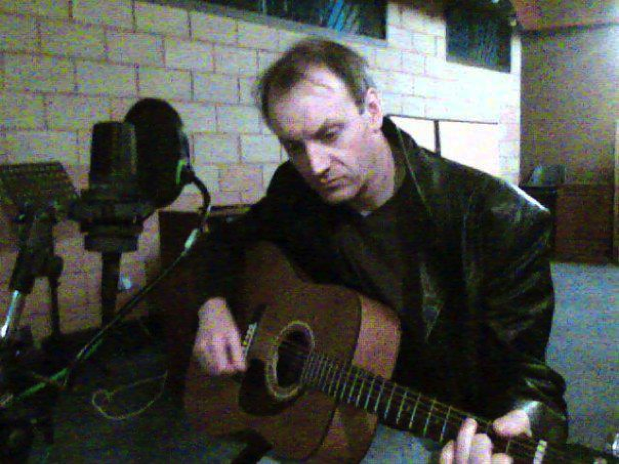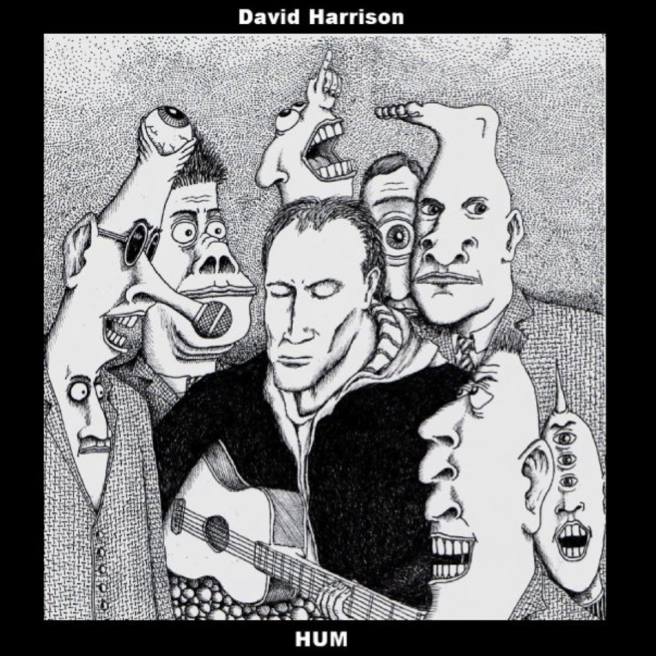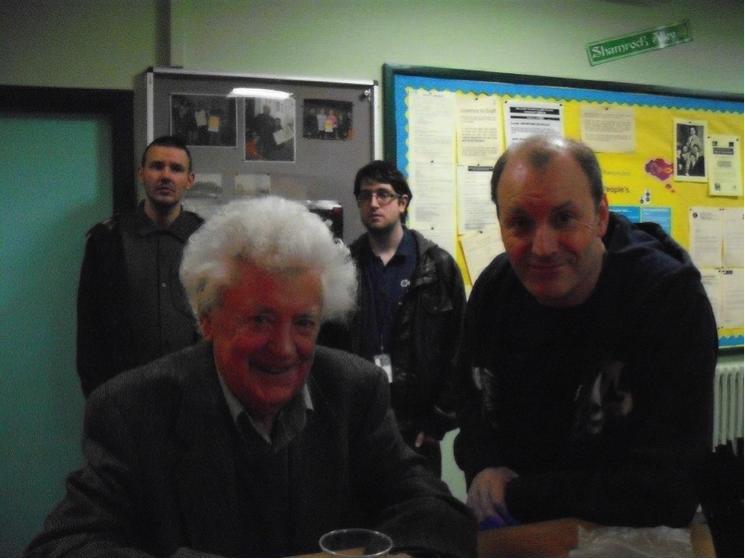The Masonic and Historical Scholarship
of Dr. David Harrison, an In-Depth Interview
Elena Llamas, Director of Public Relations for Phoenixmasonry
You may have read or at least seen his numerous blog posts and his books, but did you know that Dr. David Harrison is a trained archeologist and also a recording musician? Dr. Harrison’s versatile work is hard to miss and impossible to forget. Why? Because he has a uniquely scholarly, yet approachable, style of bringing Masonic and historical subjects to his readers’ attention. Dr. Harrison has written seven books on the history of Freemasonry and one book on Liverpool philanthropist Christopher Rawdon, who had links to Freemasonry. Phoenixmasonry is pleased to have had the opportunity to interview this prolific writer and share his work and thoughts.
Dr. David Harrison
Elena: David, thank you for this interview with us. Tell us about your background, were did you grow up and where do you live now?
David: I grew up in the north-west of England, and still live there today. This part of England and the old industries that existed in the area have been an influence on my work, especially the development of trade unionism.
Elena: How did you develop a love for history?
David: I loved going around castles and old houses when I was growing up, and I was always told a lot of family history as well from my parents which probably helped.
Elena: you studied Archaeology and medieval history at the University of Wales in Bangor, graduating in 1997; did you have an inclination to investigate the history of Freemasonry then?
David: Yes, I worked in the insurance industry in-between gaining my ‘A’ Levels in 1987 and going to University in 1994, and one particular place I worked for was a Friendly Society, and the manager once discussed Freemasonry with me, a conversation that stuck with me and made me want to research it.
Elena: wonderful! You have worked as an archaeologist on ancient Roman sites around Chester and Halewood in Liverpool, among other places.
David: Yes I enjoyed working as an archaeologist, though the work was seasonal and sometimes paid, sometimes not, so as much as I enjoyed it, I decided on a more steady job. I was more into Roman archaeology back then in the late 90s, but now my interest lies in industrial archaeology.
Elena: please explain the term.
David: Industrial archaeology is a term used for the archaeology of industrial sites; old factories and old mines. Another example are the Williamson’s Tunnels in Liverpool, which were constructed in the early 1800s and are a fine example of industrial activity. Williamson’s Tunnels are named after Joseph Williamson, a Liverpool merchant, property developer and philanthropist, who had a number of tunnels dug underneath an area of Liverpool, some say to give work to the homecoming soldiers of the Napoleonic wars. The tunnels are an excellent example of architecture and craftsmanship.
Williamson’s Tunnels
Clay pipe found in Williamson’s Tunnels
Mason stone jar found in Williamson’s Tunnels
(Also known as a Ginger Bottle)
Elena: you conduct history walks in and around Liverpool. Tell us about those.
David: I mainly lecture and teach history classes in Liverpool, and during the summer months I take my groups out to various places in Liverpool, which has some of the most beautiful architecture in the world. We visit churches, examine archaeological structures, all kinds of historical buildings. I then do blog posts mainly for the students to examine where we have been, but they have also become popular on social media.
Elena: you don’t seem to be running out of interesting historical things from around Liverpool to write about.
David: Liverpool is a fascinating historical city and because of it’s past as a major port, many wealthy merchants built some fantastic buildings. It was also a center for the banking and insurance industry due to its maritime connections, and has some beautiful buildings, such as the Liver Building. It also has plenty of manor houses and parks. It also has some great musical history.
Elena: you are a Freemason, when, where, and why did you join Freemasonry?
David: I joined Freemasonry in 1998 in a local lodge in Warrington. I always remembered my time in the insurance industry and how there were discussions about Freemasonry there, and then when the opportunity arose, I joined.
Elena: You earned a PhD from the University of Liverpool in 2008 where you focused your research on the development of English Freemasonry.
David: I worked for an archaeologist for a short time, but the work was seasonal and sometimes voluntary. When we got paid it wasn’t that much, so I decided to go into teaching, then after doing an MA at the University of Liverpool, I was offered to do a PhD in 2000, so I suggested the development of English Freemasonry as a research topic, and they loved the idea. By that time I had been a Freemason for a couple of years so I was getting into the research of it.
Elena: the bestseller, The Genesis of Freemasonry, is the first book you published. It was your doctoral thesis out of the University of Liverpool. What did you set out to accomplish in The Genesis of Freemasonry and do you feel you succeeded?
Dr. David Harrison holding a copy of his book, The Genesis of Freemasonry
David: My main PhD tutor Dr William Ashworth had always suggested it would make a great book, so I started making enquiries into publishing. I remember being offered a publishing deal with the University of Liverpool, but after a while, nothing happened, then Lewis Masonic offered me a publishing deal, and I decided to go for that. I also had a number of academic papers published by this time so my academic career was running parallel to my career as a popular Masonic author.
Elena: did you adapt your thesis for the general public?
David: My advice by Dr Ashworth was to leave it like the PhD; it was already breaking from the tradition in so much that it was written in a more experimental fashion, and when Lewis Masonic received the manuscript, they decided to publish as it was, though it received some editing that I was not comfortable with at the time. I had a chance to change that for the second edition which was published a few years ago.
It was an interesting topic, no one had covered it before, and I had some interesting ideas that gelled with the ideas of my tutor. When researching a PhD you need to get on well with your tutor and be able to bounce ideas around. The tutor guides you in a way, and I was lucky that Dr Will Ashworth is such a great tutor, he has a fantastic knowledge, a way of thinking about the modern period and he had a knowledge of Freemasonry during the eighteenth century which was helpful.
Elena: every PhD student must “defend” their thesis at the end of their studies before a panel of scrutinizing professors. You successfully defended your thesis on the first try, which is very unusual, you must be proud of that. Was the panel blown away with your topic, perhaps?
David: It was a very interesting afternoon, a lot of discussion took place, I was nervous and was in a room with some brilliant historical minds; my external was Dr Simon Schaffer of Cambridge University, and he thoroughly examined everything, every word and suggestion, every bit of evidence was discussed. It seemed like I was in the room for hours defending every last detail. Dr Schaffer has an excellent background in the Enlightenment period, and knew how Newtonian experimental philosophy influenced Freemasons of the period such as Desaguliers.
Elena: was it difficult to manage your attachment or sentimentality for Freemasonry as a Freemason on one hand and your historian role on the other?
David: I’ve always had a balanced view of Freemasonry, it reflects the light and darkness of human nature, so my view is balanced. It is interesting how in the history of Freemasonry, there are many threads that reflect human nature in many ways.
Elena: in The Genesis of Freemasonry you explore the history of the creation of the first Masonic Grand Lodge in 1717, tracing its roots through mediaeval guild societies, alchemy, and secret rituals designed to raise the dead. Are these the origins of Freemasonry itself?
David: Not exactly, the medieval trade guilds are certainly at the core of the origin of Freemasonry, as there is evidence of a transitional period of sorts, with lodges having both operative and speculative members mixing together. Alchemy was certainly being practiced by early Freemasons, and there is evidence for an influence of a symbolic nature, the ritual displays elements of necromancy in the third degree. I believe the term used is the ‘River Theory’ where a number of influences streamed into one to create what we know as Freemasonry today.
Elena: how does the Royal Society, founded in the 17th century to promote science, feature in the book?
David: Many Freemasons have been Fellows of the Royal Society, and there were early Masons involved at the beginning of the Society such as Elias Ashmole, Sir Robert Moray and Christopher Wren.
Elena: you describe a common thread among Freemasonry’s founders in England: a concern, bordering on obsession, with Solomon’s Temple, alchemy, and prophecy.
David: Yes, there were indeed early Freemasons such as Christopher Wren who was deeply interested in the design of Solomon’s Temple, Elias Ashmole who was fascinated by alchemy and others that were concerned with prophecy during a time of a fermentation of magic and early science.
The back cover of the 1st Edition of The Genesis of Freemasonry, revealing a plan of Solomon's Temple. The cover design was stylized by the artist - on the suggestion of sales manager Martin Faulks - to present an array of mysterious Masonic images from eighteenth century manuscripts, broken up and put back together - to create a kind of Masonic puzzle, which in a way represents the puzzle of the genesis of the Craft - a puzzle which the book attempts to solve. Dr. David Harrison.
Elena: in the book, you talk about several important historical and world-renowned personalities such as Isaac Newton, who is generally not believed to have been a Mason. Why do you talk about Newton?
David: Newton and Newtonian experimental philosophy was a great influence on certain early Freemasons such as Desaguliers, and Newton was obsessed with the search of the true dimensions of Solomon’s Temple.
Elena: Tell us about John Theophilus Desaguliers, the British natural philosopher, clergyman, engineer and freemason, assistant to Isaac Newton, who was instrumental in the establishment of the first Grand Lodge and served as its third Grand Master.
John Theophilus Desaguliers (1683 –1744)
David: Desaguliers is a fascinating historical character and was an essential figure in transforming modern Freemasonry, creating the third degree structure.
Elena: how does John Dee, the 16th century magician, mathematician, astronomer, astrologer, occult philosopher, and adviser to Queen Elizabeth I figure in The Genesis of Freemasonry? Dee had been dead for over a century before the first Grand Lodge was formed.
John Dee (1527 – 1608 or 1609)
David: Dee influenced certain early Freemasons such as Elias Ashmole, Dee was a magician, mathematician and was obsessed with certain rituals that summoned Angels, it was this that fascinated Ashmole, as well as the alchemy.
Elias Ashmole 1617 –1692
Elias Ashmole was made a Freemason in my hometown of Warrington so I became interested in him partly because of that reason, but he was involved in all kinds of researches. He acquired some of John Dee’s library, he kept a fascinating diary and was a keen collector of artifacts.
Elena: you mention Freemason Benjamin Franklin in The Genesis of Freemasonry several times.
Benjamin Franklin 1705 –1790
David: Yes, Franklin was an important Freemason, he visited England a number of times and was a man of letters, he wrote to many other Freemasons, and was involved with fellow scientists from the Royal Society and the Lunar Society. Apart from his political activities in the fledgling USA, he was a brilliant mind that explored the hidden mysteries of nature and science.
Elena: Sir Christopher Wren is one of the most highly acclaimed English architects of all time. He built or rebuilt 52 churches in London after the Great Fire in 1666, including St. Paul's Cathedral, his greatest accomplishment. Tell us about the secret location of a true stone of King Solomon’s temple hidden in St. Paul’s Cathedral by Freemasons.
Sir Christopher Wren (1632 – 1723)
David: Well it’s not so secret really, it was deposited there in the nineteenth century but shows how the sacred space of St Paul’s was still seen as a Temple in London.
St Paul’s Cathedral, London.
Elena: how many years did you work on The Genesis of Freemasonry?
David: As my PhD it was seven years part time from 2000 to 2007.
Elena: when did you realize you were certain to become a Masonic author for the rest of your life? I am hoping that is the case, is it your plan?
David: It depends on where life takes me, I do like writing about local history (my MA was in local history under Dr. Paul Booth) and my first degree at Bangor was Welsh history which was fascinating, so I may venture more into writing about local history at some point.
Elena: your second book, The Transformation of Freemasonry, is a continuation of The Genesis of Freemasonry. How and when did you decide to write The Transformation of Freemasonry?
David: The Transformation of Freemasonry came about when Lewis Masonic mentioned they would like another book as ‘Genesis of Freemasonry’ was selling well. Then they decided to wait on it as the recession hit in 2010. I was approached by another publisher called Arima, and they said they would like to publish two editions, one in hardback and another in paperback, so it became my second book and we developed a great working relationship. Arima has since attracted more Masonic works over the years by the likes of John Belton and Julian Rees.
Elena: The book looks at Freemasonry in England and Wales. Tell us about the Unlawful Societies Act of 1799 and how it ties into your second book.
David: It was an oppressive Act of parliament that affected Freemasonry in many ways, and the Transformation explores some of these themes.
Elena: The Transformation of Freemasonry explains that Freemasonry became tainted with the stigma of the French Revolution?
David: Freemasonry suffered after the Secret Societies Act of 1799, and in certain lodges in more industrial areas there became more of a working-class make-up, especially in towns such as Warrington, Wigan and Oldham in the north-west of England. Other lodges suffered low membership and only recovered in the mid-nineteenth century.
Elena: tell us about the Masonic links with the slave trade.
David: This was mainly in Liverpool, where some merchants such as Thomas Golightly and Isaac Gascoigne were Freemasons. A very interesting period, as there were also some Freemasons, such as George Canning, who were against the slave trade.
Elena: how were relations between English Freemasons and U.S. Freemasons during the time discussed in the book? Were there links between English Freemasons and Freemasons involved in the American Civil War and Abolition movement?
David: Again in Liverpool there was a tenuous connection between Freemasons and men of a Masonic background that assisted in gaining support for the Confederate cause in the port, it is one of those areas were my interest in local history crosses over to Freemasonry.
Elena: The Transformation of Freemasonry also looks at how Freemasonry transformed itself during the 19th century, and how the Craft began to appeal to Victorian occultists.
David: Yes, that is when there was an ‘Occult Revival’ in the later nineteenth century, with Freemasons such as Arthur Edward Waite and Sir Arthur Conan-Doyle exploring areas of a more esoteric nature, such as Waite co-designing a deck of Tarot Cards for example. Crowley’s involvement is another example.
Elena: your third book, The Liverpool Masonic Rebellion and the Wigan Grand Lodge, came out in 2012. What is the Liverpool Masonic Rebellion? And what is the Wigan Grand Lodge?
David: The Antients were formed in 1751 as a reaction against the Moderns and what they saw as their modernization of Freemasonry. The Antients and Moderns came together in 1813. The Liverpool Masonic Rebellion occurred as a reaction against the Union of 1813, and included a number of Liverpool and Wigan lodges. Eventually the new rebel Grand Lodge settled in Wigan and though it saw itself as a relaunch of the Antients Grand Lodge, it became known as the Grand Lodge held in Wigan, or to cut it short the Wigan Grand Lodge. It lasted until 1913.
Elena: what consequences or traces of the Liverpool Masonic Rebellion and the history of the Wigan Grand Lodge can be found in English Freemasonry today?
David: The large Province of Lancashire was cut in half; creating the Provinces of East and West Lancashire, and a certain flexibility was given to lodges when it came to practicing their ritual.
Elena: you next wrote A Quick Guide to Freemasonry, published in 2013. What did you set out to accomplish with this guide?
David: I was commissioned by Lewis Masonic to do the ‘Quick Guide’, I believe at the time there were plans to do a series of ‘Quick Guide’s’ and it was a nice little project, a break from the academic work, but the book still draws on my previous academic work. It was aimed at lodge mentors and new members.
Elena: for our U.S. readers, what are the current English Masonic rituals discussed in the guide, namely, the Emulation, Bottomley, Nigerian, Bristol, York, and Hull rituals? How do they differ and how are they similar to one another?
David: They are all based on emulation ritual, but differ slightly in wording or in the perambulations, over the years becoming an individual style for performing ritual, some being local in style such as Bottomley which is unique to the Merseyside area.
Elena: in 2014, you published your fifth book, The York Grand Lodge. What was the Grand Lodge of All England held at York, for how long did it exist, and why the lofty name “all” England?
David: This was another northern independent Grand Lodge that operated from York. It declared itself a Grand Lodge in 1726 and though it faded away in the 1740s, it was revived in 1761 and lasted until the 1790s.
Elena: what is the Prince Edwin legend and how is it related to the York Grand Lodge?
David: The Edwin Legend became a central part of the belief system of the York Grand Lodge and also of the Antients Grand Lodge, but it is just a legend. It relates to Prince Edwin, an Anglo-Saxon Prince in 926 forming the first Grand Lodge in York.
Elena: tell us about the Punch Bowl tavern.
David: It’s a beautiful old pub in York that once was the location of meetings for lodges under the York Grand Lodge.
The Punch Bowl Tavern.
Elena: is the current York Grand Lodge a continuation of the old Grand Lodge of All England held at York?
David: No, the current ‘Grand Lodge of all England’ is considered a Clandestine Grand Lodge. It was founded in 2006 but is still going I believe.
Elena: it is 2015 and your first co-authored book comes out, Freemasonry and Fraternal Societies. Tell us about your co-author, Fred Lomax.
David: Fred Lomax is a great bloke from Wigan, a Freemason and author who approached me with the idea for the book. It seemed like a nice project and it was a way of looking back at my experience with Friendly Societies as it examined Masonic-like societies such as the Oddfellows, Buffs, Elks and Moose. I really enjoyed putting that book together and was very happy with the result.
Elena: what other fraternal societies do you discuss in the book?
David: Many such as the Foresters, Druids, Ancient Shepherds, and we also discuss the Gentlemen’s Clubs, so the book looks at clubs and societies from the working classes and the upper classes.
Elena: is it the case that Freemasonry provided a model or template of sorts for these societies?
David: Certainly in the case of the Friendly Societies, many had a ritual and symbolism that is very similar to Freemasonry.
Elena: in July of this year, your book The City of York: A Masonic Guide came out. Tell us about the Masonic places hidden in York.
David: There are many; pubs, taverns, the Merchant Adventurer’s Hall, Two Masonic Halls, churches, a museum and many more. The Guide is part of a series (there is a Masonic Guide to London) and has a map and around thirty or so photos. You can walk around York with and still visit many of these places as most are open to the public.
Elena: do you have a personal favorite among the places discussed in the book?
David: The pubs ;-)
Elena: haha! Your latest book just came out. How did you come to write about a non-Masonic subject with Christopher Rawdon: The Lost Philanthropist?
David: I've been teaching a history group in Liverpool who were called the 'Rawdon Residents' and they were named after a local philanthropist called Christopher Rawdon. I started researching his life and I became fascinated with what inspired him to support local education and to help the lives of working class people. The book was very enjoyable to research and to write, and is my first biography and first non-Masonic work, though there are Masonic references, and as a work it fits in with my York Grand Lodge and Liverpool Masonic Rebellion books, as the Rawdon family came from York and moved to Liverpool during the period that these Masonic events took place. As such the book relates to these events and adds to the background in a way.
Elena: Rawdon had links to Freemasonry?
David: Christopher Rawdon was a Liverpool based merchant, banker and philanthropist, and he was involved in local education and he gave his name to a Liverpool library. His family had links to Freemasonry and other Societies, so the networking aspect of Freemasonry is discussed. His family originated from York, and there are links to York Grand Lodge which was interesting.
Elena: One of the Rawdon family also had links to the Theosophical Society.
David: Yes, Christopher Rawdon Briggs, who became a famous musician in the early twentieth century, was a member of the Theosophical Society in Manchester. I spoke to members of the Society for my research and it may be an area of study I may cover in the future.
Elena: Do you visit Lodges and other Masonic institutions to give lectures? If so, where can you be reached to schedule a presentation?
David: I do, and I can be reached through my website www.dr-david-harrison.com or through my blog, twitter, or facebook pages.
Elena: you write two blog posts a week. Your topics are diverse, always interesting, and a true staple in Masonic circles today. You don’t shy away from blogging about controversial topics, like University fraternities and various conspiracy oriented theories, but most of your blogs are about interesting English history, famous Freemasons, and personal author experiences like visits to U.S. Masonic Institutions.
Do you enjoy blogging and how do you keep finding great topics to discuss, week after week?
David: I do, it reaches new audiences all the time and with working as a history lecturer and teacher, I find a lot to write about as we visit historic sites or new research reveals new ideas.
Elena: you have also written articles for numerous Masonic publications and have appeared in television and radio to speak about Freemasonry and your writing.
David: Yes, that goes with promotion of my books. I’m always uncomfortable on TV, the talk shows are shot in crowded studios, the lighting is hot and you have to travel to get to the studios. However they are a great way for promoting books and heighten your profile.
Dr. Harrison interviewed on Gardiner’s World.
Elena: Let’s talk about your music, which is linked at the end of this interview along with your blogs and books. You are a singer, a guitarist, and a songwriter. When and how did you develop an interest in music?
David Harrison singing with his band, Spacematic c.1995
David: I started in school, forming bands that lasted about a week, then as I moved to college I met more people interested in music. I was in a few bands but the final band was called Spacematic in the 1990s. That lasted for a few years but transformed into a duo, writing, recording and performing songs. After that band split, it was a few years later that I met a Liverpool record manager called Geof Davies in Liverpool, and he advised me to record some demos, which I did. He liked what he heard and the next minute I was in a studio in Manchester recording an album. This was finally released in 2005.
David Harrison recording a demo in the Cutting Rooms, Manchester (photo by Adam Speakman who was recording the demo).
Elena: tell us about your album, Hum, which I think is fantastic! Your voice is amazing and you have a great way of emoting through the lyrics.
David: Hum was the album I did with Geof Davies and his Probe Plus label. I was always inspired by Liverpool music and those influences crept into the songs. I also like psychedelic music so that was a great influence as well. I always wanted an official release for the songs so Hum was that release. It sold ok in an ‘underground’ kind-of-way and is still available on itunes.
The cover of the album was designed by the excellent American artist and musician Rick Ray. Dr. David Harrison.
Elena: Hum had a re-release, how does it differ from the first Hum?
David: The album was remixed last year by a guy in the US who always wanted to adjust a few things and remix it. The result was a fascinating new presentation of the songs and a certain clarity of the sound.
Elena: I do hear Liverpudlean influences in your music, most notably some of the psychedelic work of The Beatles, do you agree?
David: Yes I’m a massive fan of the Beatles. When I lived in Liverpool for a time I actually lived near Strawberry Fields and McCartney’s and Lennon’s houses so I could pass those every day, which gave a new aspect to their music, especially the Sergeant Pepper period.
Elena: you are writing a book on the early days of the Beatles in Liverpool?
David: I was, it’s one of those unfinished books that some writers have. I met Pete Best – the old Beatles drummer before Ringo, and then met a few other people related to the Beatles early days, and a book started to develop about their early period and especially about Pete and another early member who passed away called Stuart Sutcliffe. The book got permanently put on the back-burner as the Masonic writing took over.
David Harrison and Allan Williams, first manager of The Beatles, at an event to celebrate 50 years of the Beatles playing the Knotty Ash Village Hall on St. Patricks Day, 2012. “Allan had a few drinks by then - it was a free bar - and he went on stage later to talk about the old days, which was entertaining,” David Harrison.
Elena: David, thank you again for this interview. It has been a pleasure and a fascinating learning experience to explore your work. I recommend that readers check out the interviews linked below, as well as your blog posts, music, and books. Phoenixmaosnry hopes to check in with you at a later time, as we are sure you will keep on producing excellent work!
Dr. David Harrison’s main blog, where you can find links to all his books, music, interviews, and more: http://dr-david-harrison.com
Dr. Harrison’s interview with On the Level, a Lewis Masonic production: https://www.youtube.com/watch?v=QC2iJgQxC4U
Dr. Harrison’s interview on The Genesis of Freemasonry on Gardiner’s World: https://www.youtube.com/watch?v=66nd7f7uZ5g
David Harrison’s original song, Luminous Circles: https://www.youtube.com/watch?v=p_5iLe5BJ3s
Dr. Harrison on Lewis Masonic: http://www.lewismasonic.co.uk/david-harrison_1
David Harrison’s Hum on itunes: https://itunes.apple.com/gb/album/hum/id316310156
Dr. Harrison’s second blog: http://drdavidharrison.blogspot.co.uk
DVD featuring a Dr. Harrison interview on Sky TV: http://www.amazon.com/Origin-Freemasonry-Where-Did-Begin/dp/B002TOL4GE/ref=sr_1_1?ie=UTF8&s=dvd&qid=1264466398&sr=8-1
Dr. Harrison on his book The York Grand Lodge: https://www.youtube.com/watch?v=YSNfqJCN9Ck
Link to all David Harrison songs: http://dr-david-harrison.com/music
